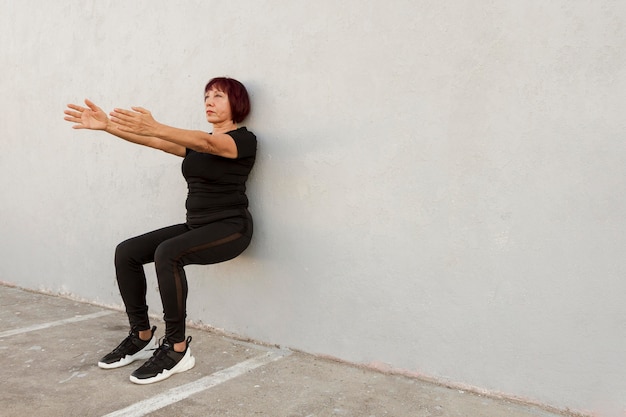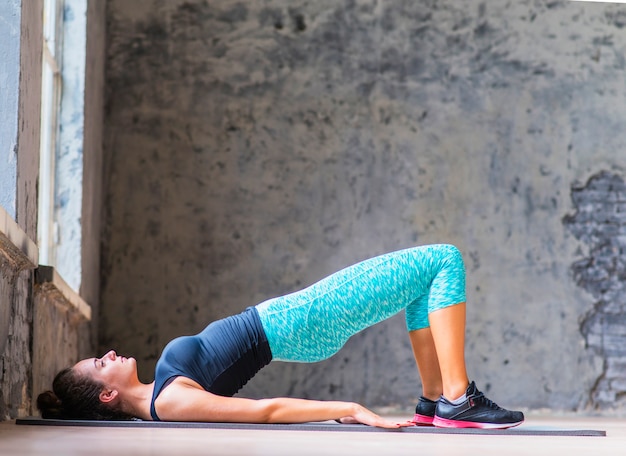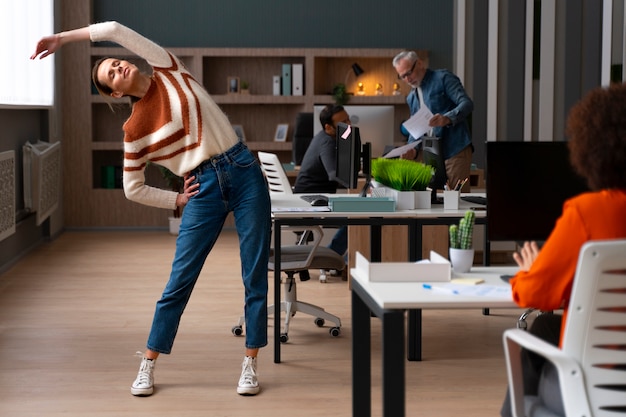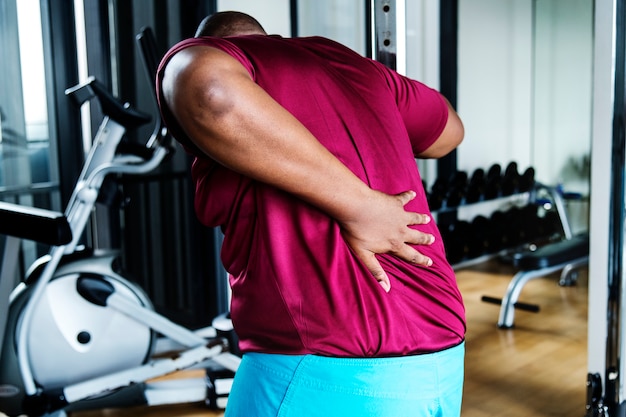Sitting for long hours doesn’t have to derail your weight-loss goals. In fact, with the right strategies, you can turn your desk into a mini fitness zone. Whether you're working remotely or in an office, these 8 results-driven desk fitness tips are designed specifically for weight-loss seekers. Backed by fitness coaching principles, each move includes form notes, modifications, and easy integration into your daily routine.
Seated leg raises are excellent for activating your lower abs and improving circulation. They require no equipment and can be done discreetly during calls or while reading emails.
How to do it: Sit tall at the edge of your chair, hands gripping the sides. Slowly extend one or both legs straight out in front, keeping your back straight. Hold for 2–3 seconds, then lower with control.
Form tip: Avoid arching your back. Engage your core throughout.
Modification: Lift one leg at a time if full extension is challenging.

Turn every trip to your desk chair into a fat-burning opportunity. Chair squats build lower body strength and increase heart rate when done in repetition.
How to do it: Before sitting, hover over your chair for 2–3 seconds in a squat position. Use your glutes and thighs to control the descent and stand back up without fully sitting.
Form tip: Keep your chest up and knees behind your toes.
Modification: Perform a partial squat if full range is uncomfortable.
Using your desk as support, push-ups can help build lean muscle, which increases resting metabolic rate—key for sustainable weight loss.
How to do it: Stand a few feet from your desk, place hands shoulder-width apart on the edge. Lower your chest toward the desk, then push back to start.
Form tip: Keep your body in a straight line from head to heels.
Modification: Move closer to the desk to reduce intensity.

Twists help engage oblique muscles and improve spinal mobility. They’re perfect for breaking up long sitting periods.
How to do it: Sit tall, feet flat. Place hands behind your head or cross arms over your chest. Gently twist to one side, hold for 2 seconds, then switch.
Form tip: Rotate from the torso, not the arms. Keep hips stable.
Modification: Reduce range of motion if you have back sensitivity.
Calf raises are simple but effective for improving blood flow and building endurance in the lower legs—especially important if you sit for hours.
How to do it: Stand behind your chair, hold for balance. Rise onto your toes, hold for 1–2 seconds, then lower slowly.
Form tip: Keep knees straight but not locked.
Modification: Perform seated calf raises by pressing through the balls of your feet.
Use your desk for balance while performing stationary lunges to increase calorie burn and leg strength.
How to do it: Stand facing your desk, place hands on the edge. Step one foot back and lower into a lunge. Push through the front heel to return.
Form tip: Keep front knee aligned with ankle.
Modification: Reduce depth or perform without stepping back fully.
Poor posture at a desk can slow metabolism over time. Shoulder rolls and neck stretches improve alignment and reduce stress-related eating triggers.
How to do it: Roll shoulders backward in slow circles for 10 reps. Gently tilt head side to side to stretch the neck.
Form tip: Keep movements slow and controlled.
Modification: Perform seated or standing—ideal during short breaks.
Deep diaphragmatic breathing can lower cortisol levels, reduce stress eating, and support fat loss.
How to do it: Sit upright, inhale deeply through your nose for 4 counts, hold for 4, exhale slowly for 6–8 counts. Repeat for 2–5 minutes.
Form tip: Focus on expanding your belly, not your chest.
Modification: Practice during transitions between tasks or meetings.

Consistency beats intensity. Aim to perform 2–3 of these exercises every hour—even 30 seconds adds up. Pair these movements with proper hydration, mindful eating, and a sustainable calorie deficit for best results.
Remember: small, daily actions create lasting change. You don’t need a gym to lose weight—just the willingness to move more, even at your desk.

Fitness

Fitness

Fitness

Fitness

Health

Health

Wellness

Wellness

Wellness

Wellness

Wellness

Wellness

Health

Fitness

Health

Health